
I am totally engrossed in a new hardback climbing book, The Climbers' Club Guidebook Centenary Journal. This book is a 304 page publication documenting the history of the Climbers' Club guidebooks. The CC 's first guidebook, LLiwedd by J.M. Archer Thomson and A.W. Andrews was published in 1909. Since 1909 the CC have published 87 guidebooks, 99 if you count double-volume books as two, to areas all over England and Wales. You probably have several of their guidebooks in your collection, indespensible climbing guides that provide the climber with information on 'where to go, what to do, and what not to do'. . You can see the full list here.
Alan James and myself, representing Rockfax guidebooks and UKClimbing.com were presented with copies of The Climbers' Club Guidebook Centenary Journal, an engraved glass tankard and a limited edition Lliwedd print by the artist Phil Gibson as we entered Shap Wells Hotel in the Cumbrian foothills on Saturday. We were there as guests at the Climbers' Club Guidebook Centennial Dinner .
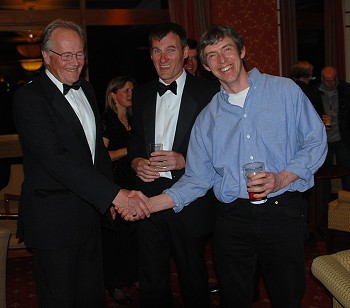
This celebration was spread over two days, the 28th and 29th March and was a lavish occasion attended by nearly 300 CC members and invited guests celebrating 100 years of continuous guidebook production by the Climbers' Club. The CC were founded in 1898, have over 1,400 members, eight climbing huts and are the biggest climbing club in the UK.
On Saturday there was a superb line up of presentations by climbers both young and the gray: Mark Vallance told the story of Friends, the passionate alpinist Nick Bullock described his recent adventures, John Cleare on the the laid-back Sixties featuring his stunning black and white photography from that period, adventurer Pat Littlejohn presented 'Before Guidebooks - Explorations in Uncharted Areas', Dave Simmonite on Extreme Rock, and there was a raw and modern presentation by CC member James Pearson entitled, 'Motivations and Milestones of a Mild Mannered Man from Matlock.'
In the afternoon, it was the big three: Sir Chris Bonington on his 'Early Climbs', a retrospective of a climbing life by Doug Scott, and finally Alex Huber and the 'Fifth Dimension.'
It was a pure climbing and mountaineering extravaganza. Although I'd seen some of these presentations before, I'm a addict and didn't mind a re-run. It was a shear pleasure to watch and listen to Sir Chris although I'd seen him at least twice before. His story is so interesting and his delivery so personal yet professional of course. It was good to get reacquainted with the life of the UK's most public climber and mountaineer.
Topically Doug Scott touched on his 'manifesto' in his campaign to be elected president of the BMC. He told the story of a 1974 international climbers meet to Lenin Peak, renamed Sina Peak in 2006, hosted by the Russians, and explained how government bureaucracy, a desire for climbing to made an Olympic sport and national pride can lead to climbers taking excessive risks; eight Russian women died on Lenin Peak that season. And how in the Alps where commercial pressures from some mountain guides and hut custodians can lead to the wholesale bolting of cliffs and mountains for ease of access and financial gain. The message here was that if climbing does become a Olympic sport, and if bolting is left unchecked, we may lose control of climbing to more powerful forces than climbers. We will be told what we can and can't do, regulation and certification will be imposed upon us; the spirit of climbing will be less and our freedoms denied us.
Doug stressed how unique the British climbing tradition is, and how it is respected across the globe and could be used, exported even, as an example how a country can have a diverse climbing experience without being sanitised by the drill and the bolt. And no matter how many times he recounts the tale of his epic descent of the Ogre with two broken legs, no one can ever tire of this tale of team spirit and survival in an extreme environment.
Doug Scott's vision as president of the BMC can be read here.
And then Alex Huber.
Born in Trostberg, Bavaria in 1968, Alex with is brother Thomas, collectively known as the 'Huberbaum', are two of the worlds top alpinists and rock climbers.
Alex Huber's delivery of his adventures was as impressive as his achievements; professional, committed and heartfelt. He took us through his solos of the South Face of Dent du Géant, the Swiss Route on Grand Capucin and the Direttissima on the Cima Grande using a mix of movie, photos and dialogue. His described first ascents of Pan Aroma (5.14b/8c) and Bellavista, (5.14b/8c) on the Torre Grande Cima Ovest which are not only physically hard but bold and singular lines up one of the steepest rock faces in the Dolomites. Then he described climbing with his brother Thomas and their speed ascent of El Capitan's Nose Route. His enthusiasm for and love of the mountains shone through, and exemplified what what he calls the fifth dimension, the emotional connection that all climbers feel, of whatever ability, to the mountain environment and their experiences.
The finale to his presentation was his account of his, Thomas, Max Riechl and Stephen Siegrist's expedition to Queen Maud Land in the Antarctic climbing the peaks Ulvetanna and Holtanna which emerge like missiles for almost 3000m out of the icepack.
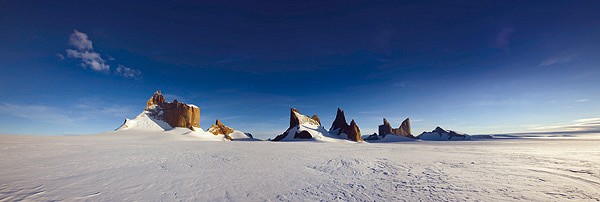
This was spellbinding and breathtaking.
"We climbed an insane route on the north west pillar of Ulvetanna, taking two days. The first ascent of Sound of Silence (E4/A2) was the icing on the cake of the best so far in our mountaineering expedition career." |
Niall Grimes nailed it later when he said that most of us, and especially many professional climbers, suffer from 'Huber envy.'
Dinner was a formal affair, black tie for some, and after cheese spinach and sorrel roulade, broccoli and stilton soup, beef bourguignon with seasonal vegetation, completed by passion fruit meringue and sticky toffee pudding, presentations were made to some of the key contributors from the CC's Publication Sub Committee (PSC).

"At the dinner, a number of presentations were made to some of the key contributors over the years. John Willson, who has served on the Publication Sub Committee (PSC) for 19 years, was presented with an original Phil Gibson drawing of GO Wall, Wintours Leap. Bob Moulton, who has retired from the PSC after 34 years of service, received an original Phil Gibson drawing of Lliwedd, a watercolour of Harrisons Rocks by Jim Curran and also a copy of the 1909 Lliwedd Guidebook - the first ever guidebook by the CC. Mark Vallance was presented with an original Phil Gibson drawing of High Tor in recognition of his work as PSC Chairman (which he has now stepped down from) and his other work within the CC. Flowers were presented to Di Moulton and Viv Smith for their support and also to June Vickers for her and her late husband Ken's contribution to guidebooks whilst running Cordee."
The many volunteers who have given so much to CC guidebooks over the years were toasted.
After dinner speeches were given by Jim Curran, Robin Campbell and Ian Smith. All three are capable after dinner speeches and we were entertained. Campbell, an editor and author at the Scottish Mountaineering Club, is 'a wee small hours veteran' and a specialist in climbing and writing in the Victorian way. In good mocking humour he told us that he doesn't like the CC guidebooks especially the way that first ascensionists are relegated to the index of CC guidebooks rather than within the route description. He didn't touch on the fact that the SMC only allowed women to become members until 1990, a good fifteen years after the Climbers Club! Decked out in a kilt, he was funny and entertaining. But before that, and before we retired to the bar, Ian Smith gave an overview of what this celebration was all about.
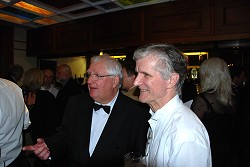
100 Years of Guide Books Proposed by Ian Smith
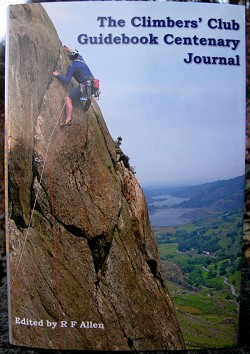
I wonder if those distant CC members who decided that: 'to fulfil at least one portion of their responsibility the Committee of the Climbers' Club have, therefore, undertaken the publication of a series of Pocket Climbers' Guides, commencing with the mountains of North Wales'. I wonder if they would have expected that we'd still be doing it a century later.
Happily, you can now all see that original guidebook in facsimile form in the Guidebook Centenary Journal superbly edited by Bob Allen and read the now rather dated, but still attractive, Victorian-style prose in a book that is quite hard to source and pretty expensive if you can. Taking a closer look at Archer Thomson and Andrews's work with its route descriptions, grades, photos and diagrams it strikes me that everything has changed but nothing has changed when comparing it to modern guides. What we have today are developments and extensions on the original model which still function today suggesting that the founding fathers got it mostly right, well done them.
So, as you will see if you read Bob Moulton's excellent article describing the history of CC guidebooks in the celebration Journal we've had a very successful publishing record, averaging out at almost a book a year. It's not been without a few turbulent times and Bob has not been afraid to include those in his account but what the CC have succeeded in doing is to create a book form that has stood the test of time and has been taken up by other publishers all over the world.
For the climber on the rockface what this has done has given them the information to go out and have some great times, and probably some right epics, and has the been at the core of preserving the historical record of who's been where and done what in our ultimately pointless but rather brilliant activity.
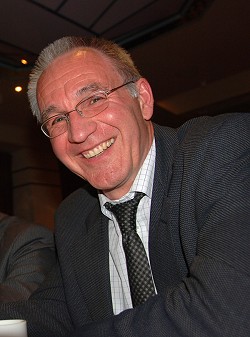
The Club began by complying with that original charge to create a series of pocket guides to the mountains of North Wales but as the Club and climbers have spread out and embraced new climbing areas so the range of guidebooks has massively increased and we have seen the expansion of CC guidebooks firstly to Cornwall in 1950, specifically West Penwith, but progressing to include North Devon and Cornwall and The Lizard and more recently the magnificent Island of Lundy. 1956 saw the club's first guide to the sandstone outcrops of south east England. Then we published our first guide to Dorset in 1969 and eventually, reflecting a sudden boom in popularity, South Wales, with Pembroke in 1985. 1988 saw the club take up the guidebook flame in Mid Wales and in the 90s the crags of the Avon, Cheddar and the Wye Valley. We have even published guides to the Peak, the first was Harding and Moulam's Black Rocks and Cratcliffe way back in 1949 and this was followed later by 4 guides published between 69 and 71. The list of guidebooks that we publish now will probably stand at something like 25 titles in the next year or so as we take over the publication of the South Devon guidebooks completing almost total coverage of the South West.
The Climbers' Club has often been at the forefront of new developments and despite occasional unfounded rumours of old fartism new ideas in climbing guides such as technical pitch grades, stars and E grades have been tried and then embraced, also we've seen changes in the appearance of the guides, with now-accepted features such as colour action photos and even different cover materials and binding methods have been tried out and adopted or rejected in CC guides.
If you look at the list of guidebooks also in the Journal you'll see a very impressive cast list where many of the greatest and most prolific climbers of the last 100 years have written guidebooks for the Club. To mention just a few: Menlove Edwards, Wilf Noyce, DavidCox, Peter Harding, Tony Moulam (the longest surviving guidebook author to join us at the dinner) Peter Crew, Paul Nunn, Eric Byne, Harold Drasdo, Paul Williams, John Sumner, Martin Crocker, Pat Littlejohn, Nick Dixon and Gary Gibson. And, of course, the crowning glory of all of this is the fact that it has been achieved purely through the efforts of unpaid volunteers, just like much of the rest of the work of the Club.
Although we've been publishing guides for a century you will see in the list that the vast majority have appeared in the last 50 years and we've produced 17 in the last ten years alone and four of those in the last 12 months (Southern Sandstone, Lundy, Portland and Llanberis). For a third of our publishing history the person at the helm has been Bob Moulton as writer, editor and business manager as well as friend, inspiration and mentor who you have already heard about.
So to celebrate our history and heritage, the laughter and the frustrations, the friendships made and the routes climbed, the words typed and those word processed, the photos taken and the gallons of ink and reams of paper, please rise and join me in the toast to 100 years of CC guidebooks.
It was a wonderful event. Alan and myself were honoured to be invited. The legacy of the Climbers' Club is rich and significant in British Climbing and her future as a club and modern guidebook publisher is assured. British climbing guidebooks are respected by climbers across the globe and are considered amongst the best in the world, and this is due to the continuity of British climbing clubs and of course with our collective obsession with documenting the activities of climbers.
Below are some photographs from the Climbers' Club Guidebook Centennial Dinner.



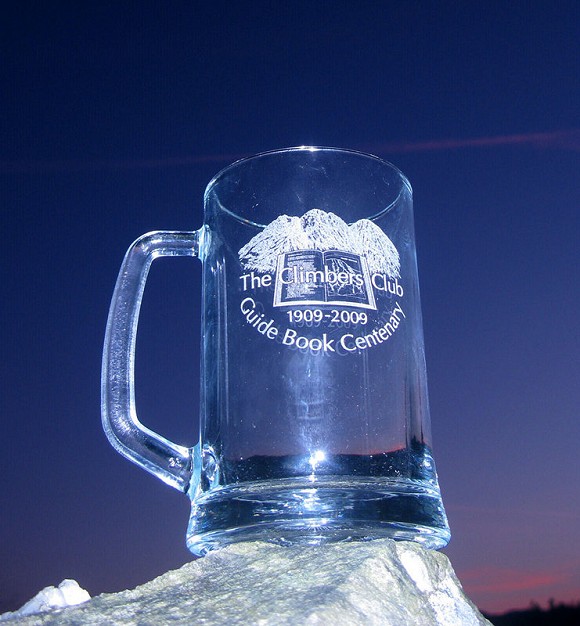
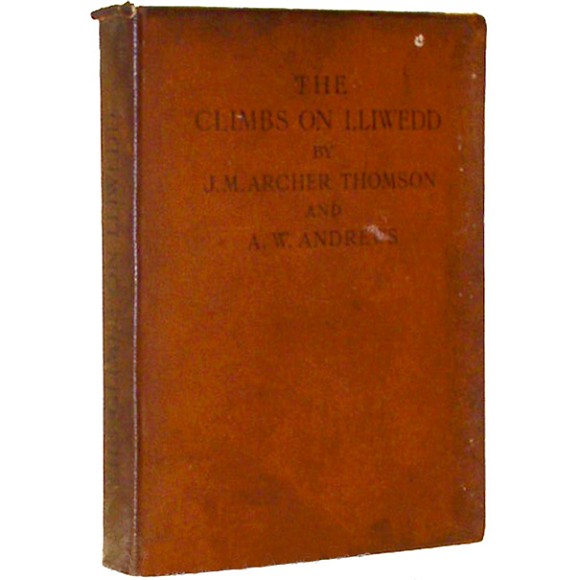
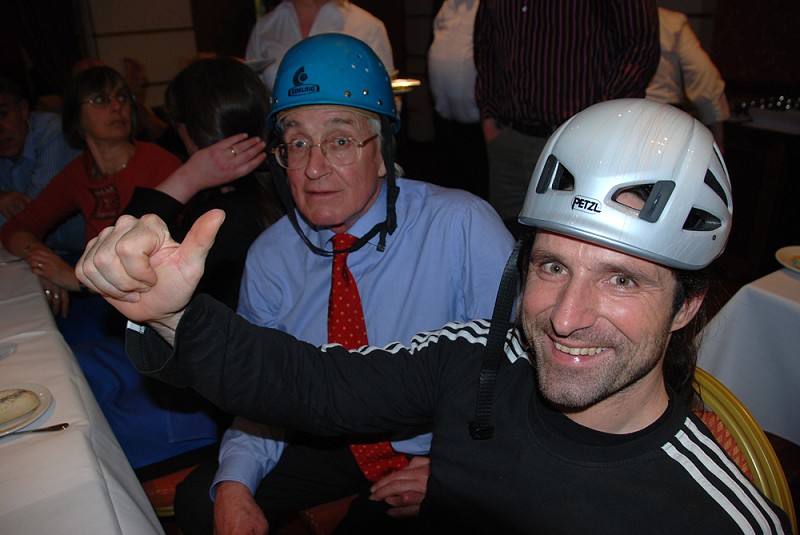
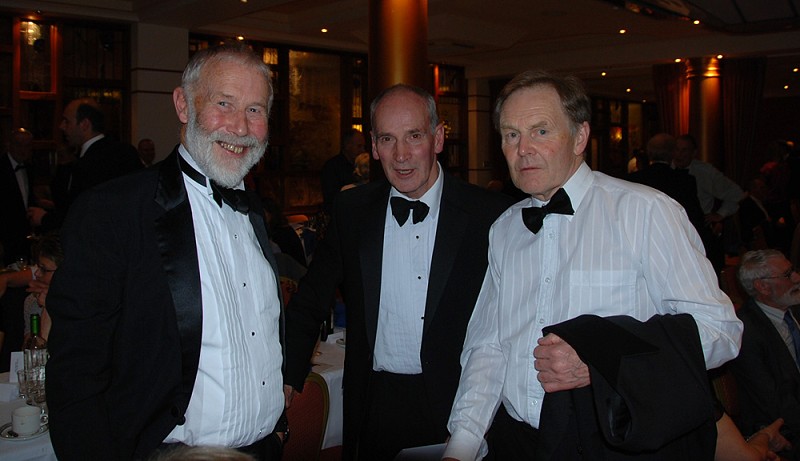
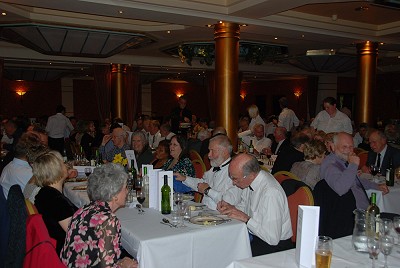

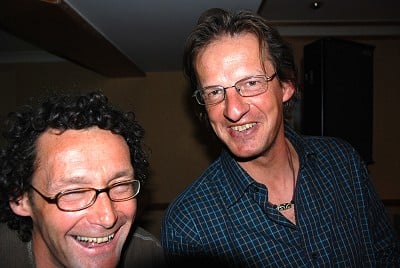
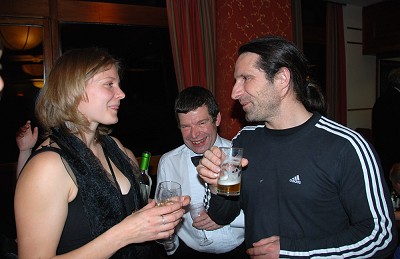
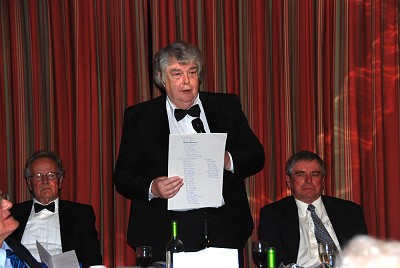
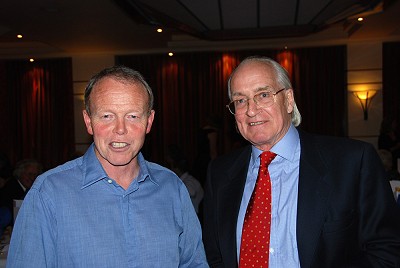
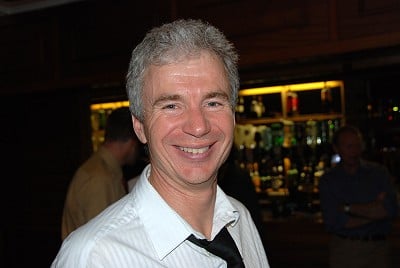

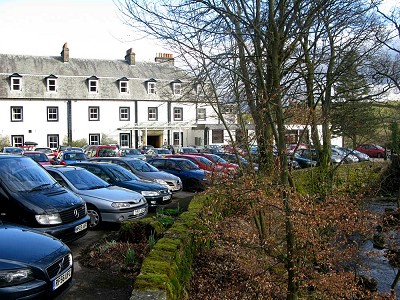
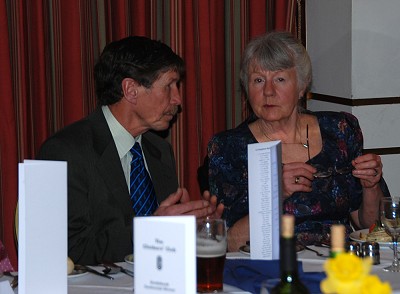
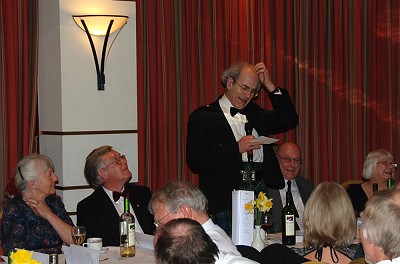
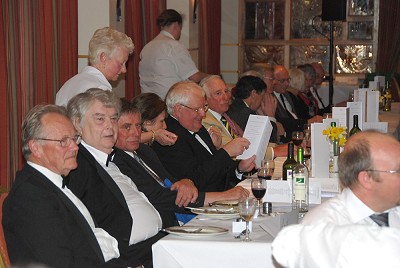



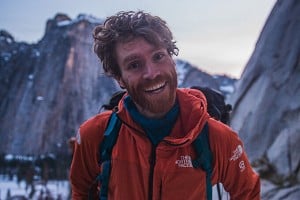



Comments